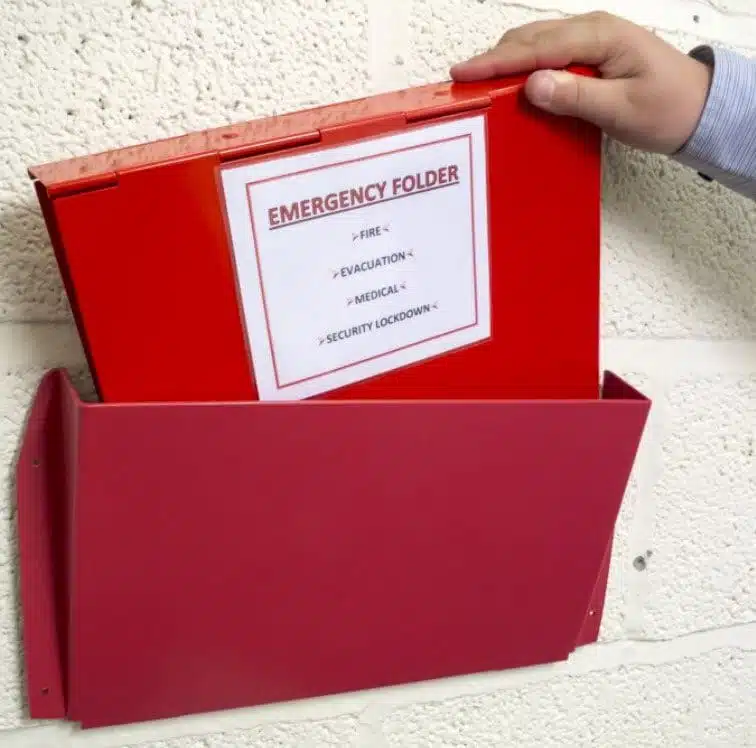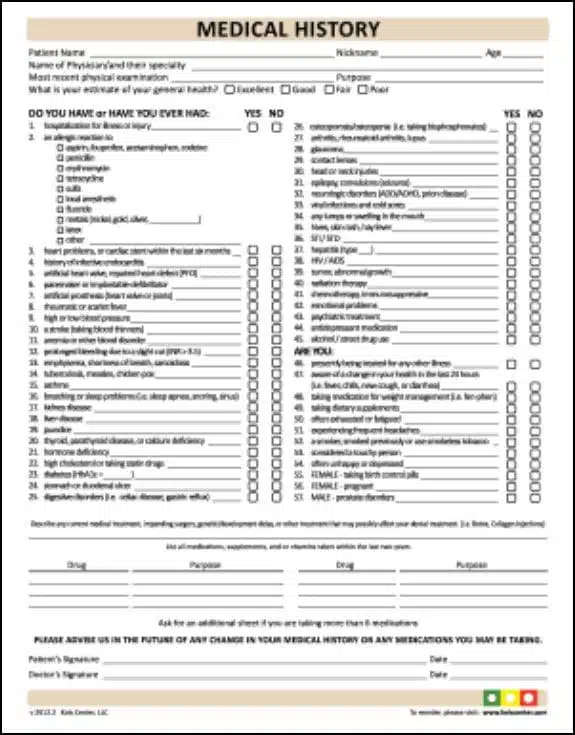Building an At-Home Emergency Information Binder
Posted in emergency planning
The problem with an in-home emergency situation is that things happen fast. With all your attention focused on contacting emergency services and tending to the sick or injured person, chances are you will not be able to grab important medical information that might play a key role in determining the outcome of events – doubly so if you are the person in danger and live alone.
With this reality in mind, let’s take some time during National Preparedness Month to discuss an important, but often-overlooked component of any in-home emergency plan: the Emergency Information Binder.
What is an Emergency Information Binder?
An emergency information binder is a reference tool that includes any and all information medical providers will need to supply appropriate care to the sick or injured person. The binder should be clearly labelled and placed in a prominent spot in the home where emergency  responders will be sure to see it.
responders will be sure to see it.
For example, affixing a clear plastic document holder to the inside of a home’s front door and using it to store a large red folder labelled “EMERGENCY INFORMATION” should make it easy for responders to find the information even if you can’t speak, or if the stress of the situation means you forget to mention it to first responders.
What goes in an Emergency Information Binder?
Everyone has different medical needs, but there is critical information that should be stored in any Emergency Information Binder.
- Health History Form
A health history form looks very similar to a document you may fill out when visiting a new physician and outlines basic information on your allergies, health habits, medication you currently take and what, if any chronic or ongoing medical conditions you have. This tool will help doctors diagnose your current condition and guide your treatment if you are unable to speak.
- Primary Care Physician Contact Information
Responding caregivers might have questions about previous treatment you have received, and providing them with your primary care physician’s contact information ensures your entire care network can mobilize to help you get better faster.
- Preferred Hospital
If you already have a working relationship with a local hospital, you will be best served by going to that care center, where they will likely have much of your information already on file. A simple sheet signed and printed with your name indicating your preferred hospital can simplify your care considerably.
- Medication List
If your Health History Form does not list medication you currently take, then add a supplementary page listing medication you currently take, as well as dosages. Be sure to include prescription drugs, over-the-counter medication and any supplements you may take.
- Pharmacy Contact Information
Once your condition has stabilized, you may need to have medication prescribed to you. Providing this information upon hospitalization can speed things along and help streamline your time in the hospital and discharge.
- Allergies List
If your Health History Form does not include allergies, be sure to list them on a separate document. Be sure to include as much detail as possible, including medication, food and environmental allergies you may have.
- Advanced HealthCare Directives
This group of documents is extremely important, as they will inform doctors about how you wish to be treated if you are unable to direct care yourself. These documents include things like a Living Will, Durable Power of Attorney for Health Care, Physician Orders for Life-Sustaining Treatment and, if applicable, Do Not Resuscitate orders.
- Emergency Contact Information
Be sure to list at least two emergency contacts who you can trust to assist you during an emergency. At least one of these people should live nearby and ensure your home is securely locked and can grab items like clothing, books and medication that you may need while under the care of the hospital.
- List of Home Occupants
In the event of a fire, carbon monoxide leak or other household emergency, getting every occupant out of a home is critical. List all current occupants of the home to ensure emergency responders know who to look for.
With all these documents gathered, take a deep breath and congratulate yourself – you’re now better prepared for an in-home emergency than ever before!
SelectCare takes emergency preparedness seriously, building emergency protocols into every client’s Plan of Care and studiously updates every client’s in-home emergency binder to reflect the client’s current condition.
If you worry about yourself or your loved ones and their ability to manage a sudden emergency, call SelectCare to learn how a home health caregiver can give your family security and peace of mind.
